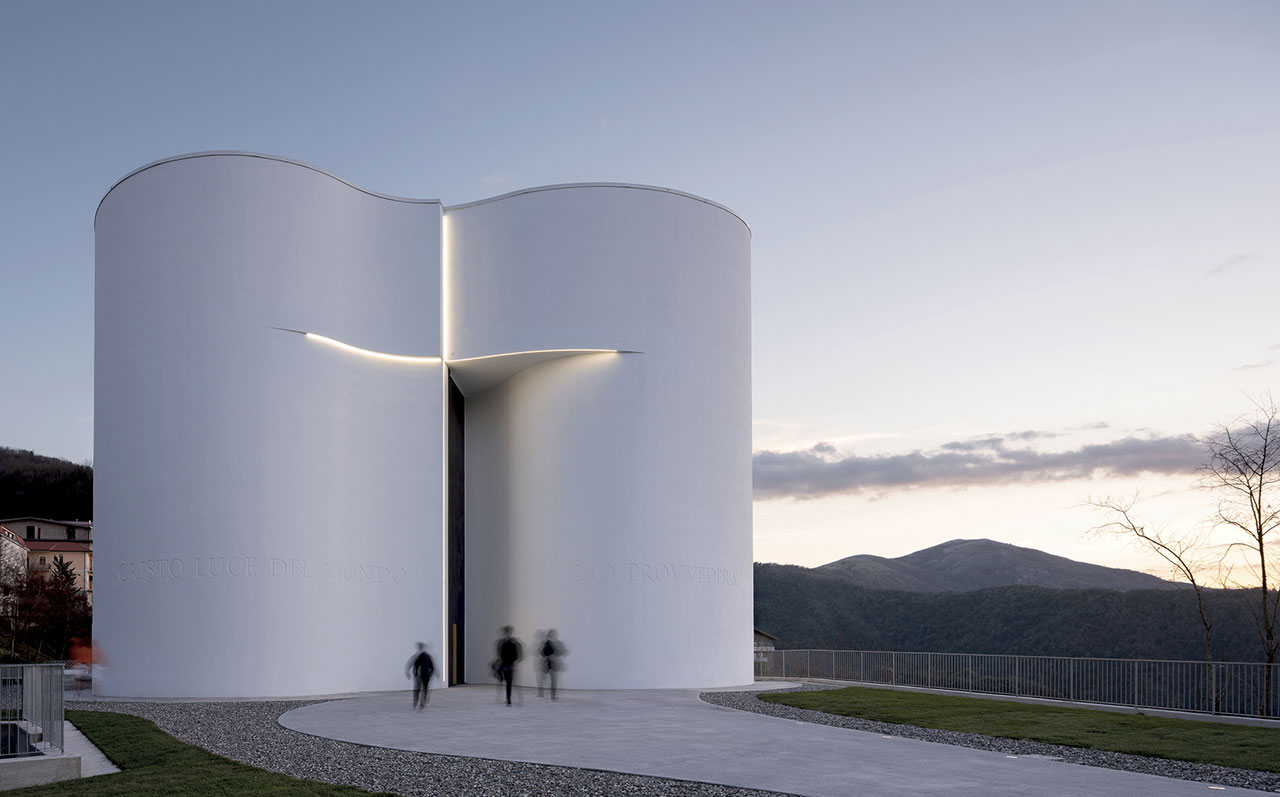SHORT DESCRIPTION
Solitary, serene, and monolithic, the new parish church of Santa Maria Goretti rises from the northern edge of the Calabrian hill town Mormanno, commanding views of the mountainous Pollino National Park. Designed by Mario Cucinella Architects the exterior of this elemental and sentinel-like building draws inspiration from natural forms as well as from the tradition of austere and beautiful apsidal Calabrian churches built by monks from the eastern reaches of the former Roman Empire escaping conquest and persecution. The result is an innovative church, dedicated to Saint Maria Goretti, a new building, that appears to stand outside time. The church is entered through a tall incision made in one of its four white concrete apses, the entrance forming a tall external cross that, lit by night, is seen like a beacon, from afar. The numinous interior, lit diaphanously from above through folds of translucent fabric hung in the form of curvaceous drapes from the ceiling, has been inspired by, on the one hand, a resolute focus on the eucharist and prayer and, on the other, by the geometries of Italy’s most compelling Baroque churches. Reached by a dedicated paved road, the church forms a small new urban complex, including a new parish center also designed by Mario Cucinella Architects. This essentially orthogonal single-storey, large concrete-framed building, offering wide views across the Pollino landscape, contains a parish meeting room, church classrooms, and the priests’ house gathered around a central planted courtyard and under a living ‘green’ roof. Clergy can enter the church from behind the altar through a sacristry concealed within its curved walls. Church bells are also hidden within the walls. Inside, the relationship between art and architecture continues. Reflecting the fluid shapes of the walls, the artist Giuseppe Maraniello has created.












